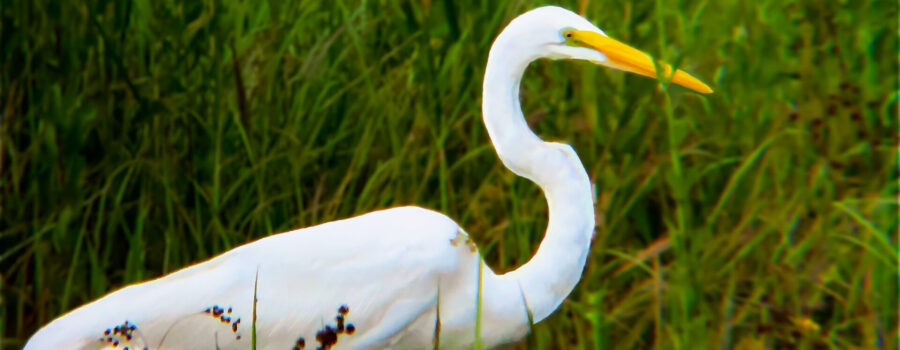The Beautiful Great Egret is a Common Bird Worldwide

Sometimes I run into photography subjects in rather unexpected places. Back in August, I had some errands to run in town and on my way back I decided to take the back roads. It definitely paid off, because along those back roads I came on a roosting area for hundreds of great egrets, cattle egrets, and ibises. It was truly incredible to see all those birds roosting together. It was also very noisy! I spent some time taking photos and videos before I finally moved on. Not far down the road I ran into a lone great egret (Ardea alba) that wasn’t quite ready to roost yet. It was still hunting along the edge of the swamp where there were fewer trees. I followed it for about thirty minutes taking photos as it hunted. For the most part, the bird paid me very little attention, but it did turn and stare at me once and then I guess it decided I was no threat since it went back to it’s hunting.

Great egrets, also known as great white egrets, common egrets, large egrets, or great white herons, are a pretty common bird and can be found throughout the world in most tropical, subtropical, and temperate habitats. There are four subspecies with minor differences. These birds can be found near water, particularly in areas with tall trees that provide good roosting and nesting grounds. They tend to roost and nest in colonies, near the tops of trees that overlook swamps or lakes. They are especially fond of places that have reeds or other underbrush below them. Here in Florida, they often nest over places near alligators. The gators help to keep away predators like raccoons that will climb the trees. In turn, the gators will feed on eggs and nestlings that fall from the nest.

Great egrets are well known for their varied diets. They eat a lot of fish, but will also consume frogs and other amphibians, snakes, lizards, crustaceans, small mammals, and insects, especially grasshoppers and crickets. They hunt by stalking their prey through shallow water in the reeds and underbrush. They usually spear their prey with their sharp beaks in a quick stabbing motion. When nesting, both parents incubate the eggs, and both feed the nestlings by regurgitating partially digested food to them. This species is currently doing well, and even expanding its range northwards in the northern hemisphere. It is also pretty good at adapting to human presence, which may well be contributing to its success.





Recent Comments